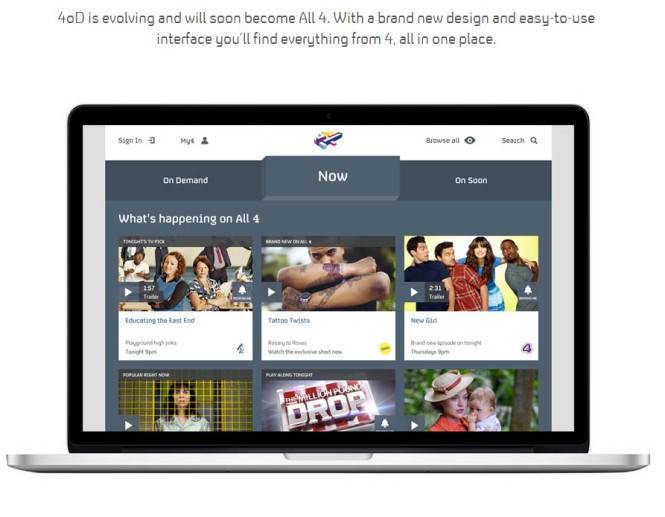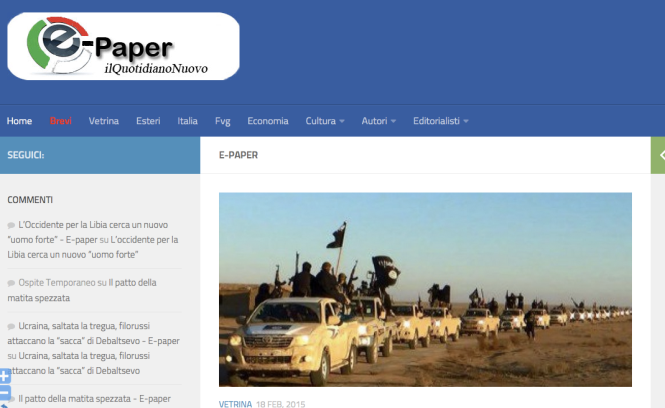(Spanish version). Andrea Llovera (@lloveraandrea) and Mar Lopez (@kualalumpurer) Interview with David Caminada, journalist and professor at Pompeu Fabra University that collaborates with the Argentinian newspaper Clarín.


Tell us about clarin.com
Clarín.com belongs to the Clarín Group, a very important media company in Argentina. The newspaper Clarín was founded in 1945 and has since been one of the biggest newspapers in Argentina. Over time it has expanded, now is a big conglomerate with a lot of divisions. In the future it is expected towards other business such as satellite television and, of course, Internet.
Since when is the Clarín newspaper online?
Clarín started like all other media groups in Internet, in 1996 – 1997. The question then was not whether be in Internet or not, but to believe in Internet. Clarín made a serious commitment. Internet is the key and makes the difference.
Why?
The traditional Clarín is basically only sold in Argentina and in a few more places, whereas clarin.com can be diffused and consulted from any place in the world. It is the third digital newspaper more visited in Spanish at the moment.
Which ones are ahead?
The first one is El País with 11,2 millions of exclusive users per month. El Mundo has 9,8 millions and then El Clarin 9,8. But the figures are deceptive because the visits of mobile devices from outside of Spain have not been counted.
Why does it have so many visits ?
Clarín.com is a very searchable website. It moves away from the typical quality journalism and nice look that some newspapers of its kind, like El País, use to be. In comparison to this Spanish newspaper, Clarín has quite an aggressive website. It is influenced by the Anglo-Saxon journalism but it is not a tabloid. However, it follows the “click dictatorship”.
The click Dictatorship?
Clarín wants to have as much views as possible and it achieves this goal using a very concrete style in its titles and content. It has the classical sections of politics and sport but also has sections with shallow content. In this sections you can find frivolous, silly, viral and controversial issues so as to get people to click and push up the views and therefore the advertisement fees.
What other features does the Clarín.com have?
It tries, as other newspapers around the world, to make the digital newspaper a different product than the paper one. Originally the Internet journalist was the youngest in the staff, he or she had to work long hours for the online newspaper because it is a completely new language and requires some specific knowledge.
What is required?
A minimal newsroom, try not to copy and paste informations and to create a product that is useful for your readers. Journalists should not just load the teletype with the information as soon as it gets to the newsroom. Journalists ought to go to the places where the news are produced if its possible and always include complementary information. Herein is where american journalism takes the lead and what makes the difference between online and traditional newspapers.
What do you mean?
A good piece of text is fine for either type of newspaper. What it is really important is the information processing, using audios, videos, interactive graphics, hyperlinks… Always bearing in mind from where are people reading.
Anything else?
Be always aware of who is your reader. If my target was the Spanish speaking community in United States I could make a section called “The Spanish United States” and offer useful information for them. I would have to find topics that arise the interest of such people. This obviously cannot be done from Buenos Aires, people in situ is needed. Unfortunately only great groups can afford this.
And what about the small groups?
Although it may seem contradictory, the journalistic market is saturated with very generic products and only the biggest groups are able to bear such an investment. They fractionate the audience in order to adapt to it and offer journalism “packs” that truly interest that kind of people. El País.com for example, is actualised from the Mexico D.F. newsroom so when the night falls for us, for them is daytime and thus by doing so they reduce costs. But of the three different kinds of media groups, only the biggest ones are capable of so.
Which are these kinds?
As I said before there are three.The small, that is precariously financed by crowdfunding and goes project by project. The medium one that survives thanks to subsidies because the profits made from sales and advertisement have dropped and are reducing costs. And finally the big ones that the profits earned by Internet and television make up for the newspapers losses.
Is the written newspaper bound to disappear?
This is the great question. The Clarín is a consolidated newspaper at the moment. It has audience for all its versions. The spectacular growth however is in Internet, traditional newspapers nowadays either survive thanks to other products or die. I think that both types of newspaper can coexist for the moment but the time will arrive when other ways of business may be found and written newspaper will die out.
Online payment journalism?
El País.com made people pay for everything once in the 90’s and their sales fell by 80%. This is one of the big questions that journalism has to answer. I think that adapting the content to the preferences of the readers and to the online world is the key that will create new future perspectives for the digital journalism, which is, without any doubt, the future.
Spanish version
















